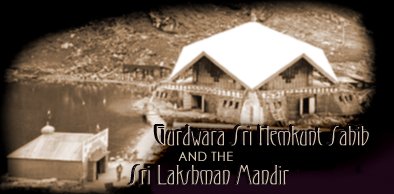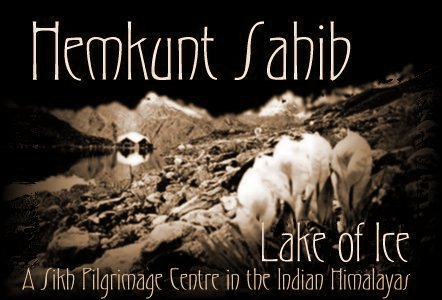

In the Indian epic and Puranic literature, Himalayan landscapes are described as the dwelling places of gods and goddesses. Pilgrimage shrines mark the places where the landforms themselves - mountains, rivers, forests, and lakes - are said to have acquired sacred qualities. High above the tree line, in the midst of a natural rock garden of moss, ferns, and flowers, is one such sacred place: a small, blue-green lake fed by water which cascades down from the surrounding mountain walls. Located in the Uttarkhand Himalayas bordering Tibet and Nepal, it is accessible for only four months of the year. Between June and October, sun and monsoon rains melt the ice and snow that are its namesake. Then, the steep stone footpath that leads to the lake is crowded with pilgrims and tourists. They journey to the base of the route on foot from neighbouring mountain valleys, or from the plains in buses, cars, and trucks, on scooters and bicycles, even by foot. Then for two days they climb upward. Some walk, some ride mules, and some are carried by porters. Finally, at the top of more than a thousand stone steps, the holy lake, the Sri Hemkunt Sahib Gurdwara, and the Sri Lakshman Mandir come into view.

Sikhs believe that this holy place, known as Hemkunt (lake of ice), is the tap asthan (place of meditation and prayer) at which the tenth and final living Guru of the Sikhs achieved union with God in his previous incarnation. From there, the Guru was summoned by God to be reborn into the world to teach the people the true path. The temple built on the shore of the lake commemorates his mission. It also shelters the Guru Granth Sahib, the eternal scriptural Guru for the Sikh community. The community is itself recognized as a collective Guru, and pilgrims, as they walk the path toward Hemkunt, share the sacred journey with its members. In this way, all three forms of the Guru - the source of spiritual guidance - are understood to be present at Hemkunt. Sikh pilgrims go there to be inspired to walk the same difficult path that the Guru walked, both in body and in spirit, and to, through the Guru's grace, realize their connection with God in the same place where the Guru realized his. At Hemkunt Sahib, Sikhs feel closer to the Guru and, through the Guru, closer to God.
This 'lake of ice' is also sacred to the hill people who live in the valley below. They tell of the
gods Lakshman, Hanuman, Shiva, and Vishnu, the tales of their deeds woven together with
images from local landscapes. Long before the Sikhs knew the lake as the Guru's tap asthan,
these people knew it as Lokpal, and made annual pilgrimages to its shore. For them, as for
Sikhs, the journey continues to be an act of devotion, and the holy lake itself is a place for prayer
and worship - a place where wishes can be fulfilled.




